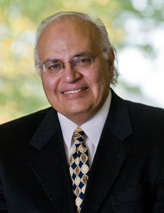The CAC Begins Collaboration with the Army Research Laboratory

The College of Engineering’s Center for Advanced Communications (CAC) is entering into a first-time partnership with the U.S. Army. As part of a contract with the Army Research Laboratory (ARL), whose mission is to provide innovative science, technology, and analysis to enable full-spectrum operations, the CAC is receiving $70,600 to fund a project titled “Signature Exploitation Techniques for Detection of Weapons behind Walls.” CAC researchers will be applying their newly developed algorithms to see whether they can obtain improved detection and classification of objects behind walls and in enclosed structures.
Dr. Moeness Amin, Director of the CAC and the principal investigator of the nine-month project, hopes that this undertaking will lead to other opportunities for collaboration between the CAC and the Army, not only on aspects and challenges associated with through-the-wall radar imaging, but also in the CAC’s other technical focus areas.
“Over the years, the CAC has received extensive funding from the Department of Defense agencies, namely, the Navy, the Air Force, and DARPA,” Dr. Amin said. “We are pleased that the Army is joining our list of sponsors.”
Dr. Amin began to have contact with the Army more than four years ago, when he participated for the first time on the NATO task force on through-the-wall radar technologies. In December 2008, representatives from the ARL visited the CAC and were impressed by what they saw and heard. After Dr. Amin gave a presentation at the ARL facilities in Adelphi, MD, in the spring, the ARL proposed that the two parties draw up a contract.
The collaboration will be mutually beneficial. In addition to state-of-the-art facilities, the ARL has experienced scientists and engineers who have command of theory and analysis. “The Army’s experts will provide data that would be difficult for us to obtain,” Dr. Amin said. “They also will provide expert opinion on our research findings and results, and they will use the CAC’s newly developed techniques on their own data to discern the extent and the offering of CAC research in this area.”
